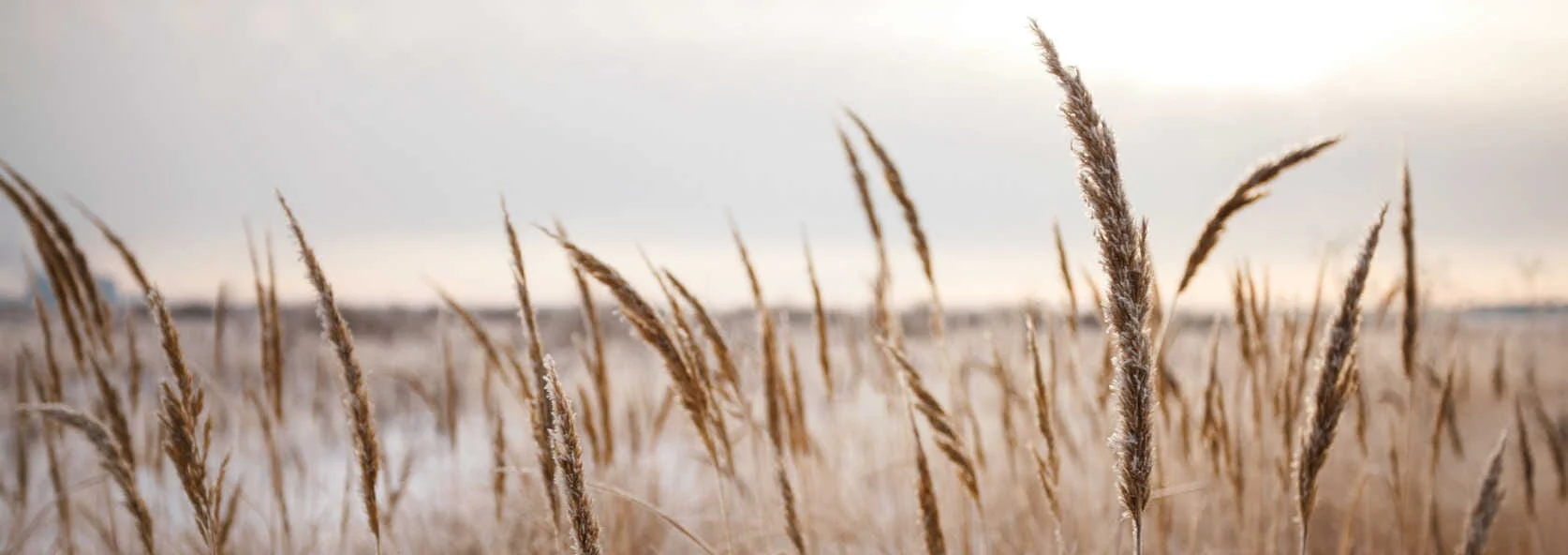Winter Rye - An Outstanding Cover Crop
by Lara Wadsworth
Winter Rye is one of the most commonly planted cover crops in many of the northern states. It holds this title for good reason. The numerous benefits of planting Winter Rye undoubtedly outweigh any potential difficulties. This versatile cover crop can be used in many regions for a multitude of purposes. Below are some of the main reasons farmers and home gardeners love Winter Rye as a cover crop. For more information about Winter Rye, including growing instructions, see the sources linked below.

Organic Winter Rye
Cold Tolerant
Winter Rye is most well known for its cold hardiness. It is typically planted in the fall to preserve a field through the winter. It is more winter hardy than winter wheat, and it can germinate in as low as 35F weather. Once established it can withstand temps down to -30F throughout the winter. While it will not continue to grow at these low temperatures, it does not winter-kill and will continue to grow as soon as temperatures warm again.
Robust Root System
The deep, extensive roots of Winter Rye significantly reduce soil compaction. Winter Rye produces a thick network of roots that interlock with the other rye around it. This increases trafficability, prevents erosion and soil compaction, and suppresses weeds (read more on this below).
Works Well With Others
Winter Rye is an all-star in the workforce! It is commonly planted with legumes to act as a nurse plant for them and further increase nitrogen density in the soil. In addition, it is shade tolerant, which makes it perfect for overseeding before the summer or fall crop is done growing. It can happily be seeded in around an existing crop to get a head start on fall sowing.
Reduces Nitrogen Loss
Nitrogen runoff can be one of the most damaging runoff chemicals in the environment. In addition, it is a crucial nutrient needed for crop development when it is in the soil. Planting Winter Rye keeps the nitrogen in the soil; once the rye is decomposed, it will become available for the next crop. It is also known as a nitrogen ‘miner’ because its deep-reaching roots dig into the soil to access nitrogen far below the surface that other crops cannot reach.
Suppresses Weeds
One of the main purposes of cover crops is to suppress weeds. Winter Rye is especially good at this. It acts as a soil cover in late fall, throughout the winter, and early in the springtime to reduce and prevent unwanted weeds from sprouting. It even has a special compound that chemically suppresses weeds, such as foxtails, kochia, pigweeds, and marestail. It is so good at its job that it is recommended to kill the Winter Rye early enough in the spring to allow time for the compound to dispel before planting a cash crop such as corn otherwise, germination may be effected. See the below resources for more information on timing.
May Not Produce Seed
In order to flower, Winter Rye needs two main things: a cold period (vernalization) and 14 hours of sunlight. Therefore, if one of these is missing, it will fail to flower and thus fail to produce seed. This works to our benefit because it won’t become weedy while the next crop grows. Some farmers even use Winter Rye as a warm-season cover crop because they don’t have to worry about killing it off before it goes to seed, only before they need to use the field again.
Grows Well in Poor Soils
Winter Rye is also well known for being able to grow in poor soils. This makes it a great option for any gardeners or farmers working on soil regenerative programs. It is one of the first steps that many take in this endeavor. It tolerates aluminum and salt concentrations in the soil much better than other crops.
Early to Mature
Early to mature and grow in spring, Winter Rye can be tilled in quite early in the year. This helps to get a head start on growing season duties that tend to pile up in mid to late springtime. Plant Winter Rye in the fall, let it protect your field all winter long, and till it down early in the year to make room for the next crop. It is easy as that.
Animal Feed
Winter Rye is also commonly used as a forage crop for livestock such as cattle, sheep, and chickens. It is a fantastic option for light winter grazing and as soon as temperatures warm up, it can be heavily fed on. This is even an option for killing it off in the spring before your next crop. It will withstand the traffic of cows wonderfully!
Whether you farm large expanses of land or you just want to do what it best for your little postage stamp of earth, Winter Rye is a fantastic option for preserving soil and, thus, environmental health throughout the winter months.